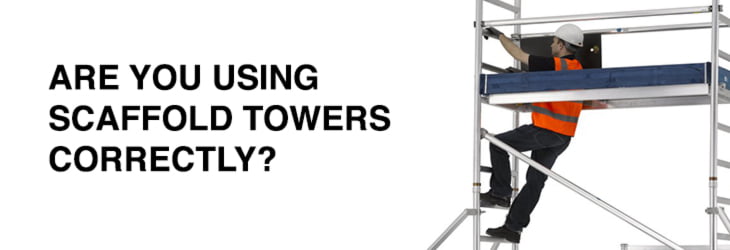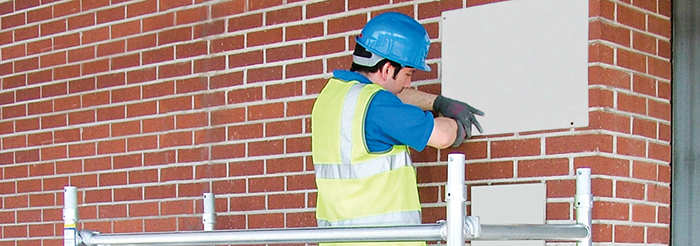Are you using your scaffold tower correctly?
18/01/2016

Scaffold towers are the ideal solution for working at height, and a useful alternative to a ladder, but with their height comes serious risks. While scaffold towers offer flexibility for working, with no need to keep three points of contact and all tools and materials more easily accessible, there are plenty of common mistakes that can lead to injury.
Top 7 risks of scaffold towers
- Use in dangerous weather conditions
Strong winds and wet days can cause issue with the stability and working area of a scaffold tower. This needs to be considered in any risk assessment, with appropriate measures taken to ensure safety.
- Broken or missing parts
If your scaffold tower is broken, faulty, or has missing parts it shouldn’t be used. It’s not worth the risk. Assessments need to be carried out prior to every job to ensure the access equipment is in full working order.
- Poor set up and / or use with incompatible components
If a tower is set up incorrectly, or component parts fail, the scaffold tower could collapse or overturn.
- Unsecured tools and equipment
Unsecured access equipment or work tools carry risks, especially in windy conditions. They could drop or fall onto others and cause serious injury.
- Using towers at heights that exceed the manufacturer guidelines
When using any access equipment it’s vital that you follow all manufacturer guidelines. The guidelines ensure safe use of the product and minimise the risk of incidents or injury occurring.
- Manual handling injury
As with all manual work, manual handling injuries can occur when erecting or dismantling tower components, or when lifting equipment up to the platform level.
- Falls from a height
As with all access equipment, falls from a height are a real risk. Edge protection must be in place to ensure employee safety, and employees must wear the relevant PPE.
Working safely on your scaffold tower

In addition to the guidance and tips above, here are a few pointers on using scaffold towers correctly:
- Firstly, ensure that the scaffold tower itself is suitable for the application intended. For example, aluminium and steel are the ideal material for soundness and reliability. Whatever scaffold tower you chose, always ensure it complies with the BS EN 1004 standard.
- When erecting your scaffold tower, always ensure it is resting on firm level ground with the castors or base plates properly supported.
- Ensure that any stabilisers or outriggers are installed in accordance to the instruction manual and that all features of the scaffold are in full working order.
For more tips and advice, why not book on to one of our scaffold safety training courses? Our offerings include:
- Ladders, Steps & Scaffold Towers
- Mobile Scaffold Towers Training (In House)
- Scaffold Towers Training Course (Accredited)
- Low Level Access & Scaffold Towers
You can find out more about each of these courses on the website, or call our Course Enquiries team on 01282 615 517 for further information.
Do you use scaffold towers regularly? If so, why not share some of your top safety tips in the comments below? Alternatively you can tweet your tips to us @BrownsLadders